Artist Peter Liversidge sends unwrapped items covered in postage stamps to people around the world
'The first thing I ever sent was a piece of toast when I was 11'
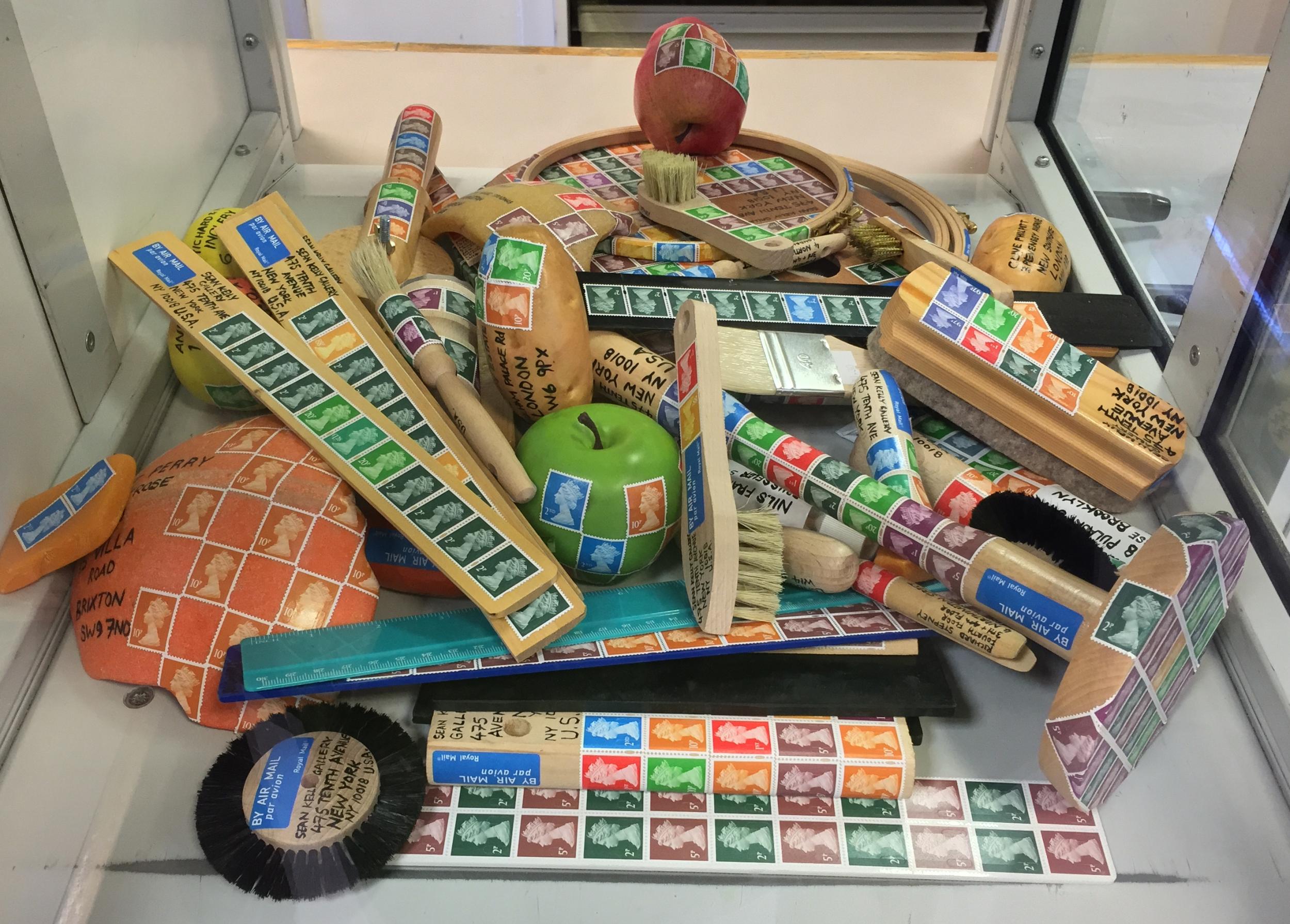
Your support helps us to tell the story
From reproductive rights to climate change to Big Tech, The Independent is on the ground when the story is developing. Whether it's investigating the financials of Elon Musk's pro-Trump PAC or producing our latest documentary, 'The A Word', which shines a light on the American women fighting for reproductive rights, we know how important it is to parse out the facts from the messaging.
At such a critical moment in US history, we need reporters on the ground. Your donation allows us to keep sending journalists to speak to both sides of the story.
The Independent is trusted by Americans across the entire political spectrum. And unlike many other quality news outlets, we choose not to lock Americans out of our reporting and analysis with paywalls. We believe quality journalism should be available to everyone, paid for by those who can afford it.
Your support makes all the difference.Mail art is a wonderfully weird movement that can take many forms. Peter Liversidge’s interpretation - as you can see from the above photo - is unique and rather abstract.
In summary, he will send people things through the post (from yo-yos to axe handles) completely unwrapped. In place of packaging, the objects themselves are covered in postage stamps with the address painted alongside. The items are then put in the mail box for the postoffice-worker to decipher and send to the right place.
“I started posting things a long time ago,” the UK-based artist recalls. “The first thing I ever sent was a piece of toast when I was 11. I didn’t know anything about mail art or a wider sense of what it could be, it just came about from posting to friends and family.”
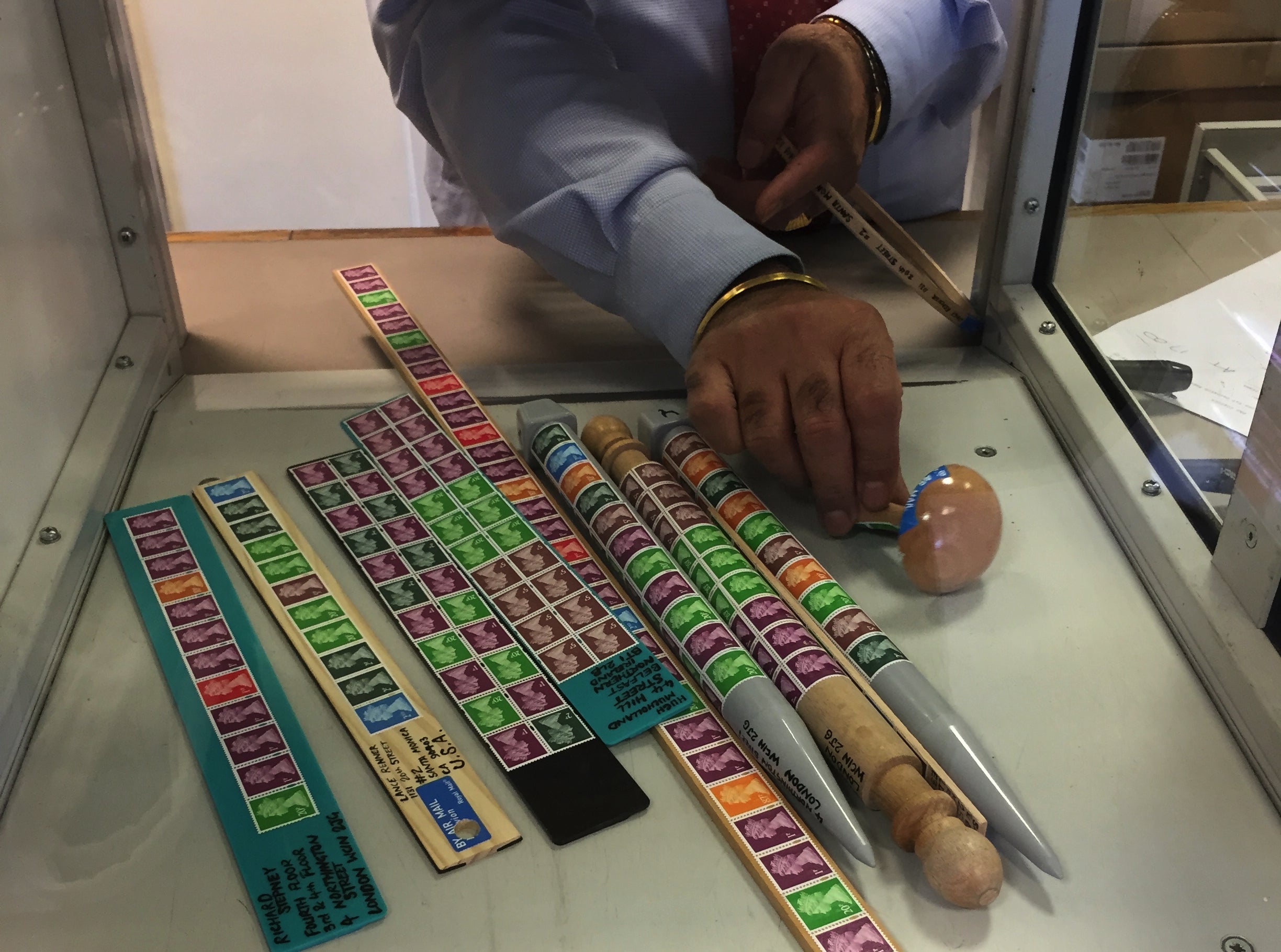
While initially done for fun, when entering his early twenties he began posting items to galleries: “The first thing I sent to a gallery was a chair which I had taken apart and posted in pieces.”
From there, it grew as an immersive art form. Unlike traditional paintings or sculptures, the act of mailing something to a gallery saw the objects being interacted with by numerous other people along the way, not just the recipient of the object.
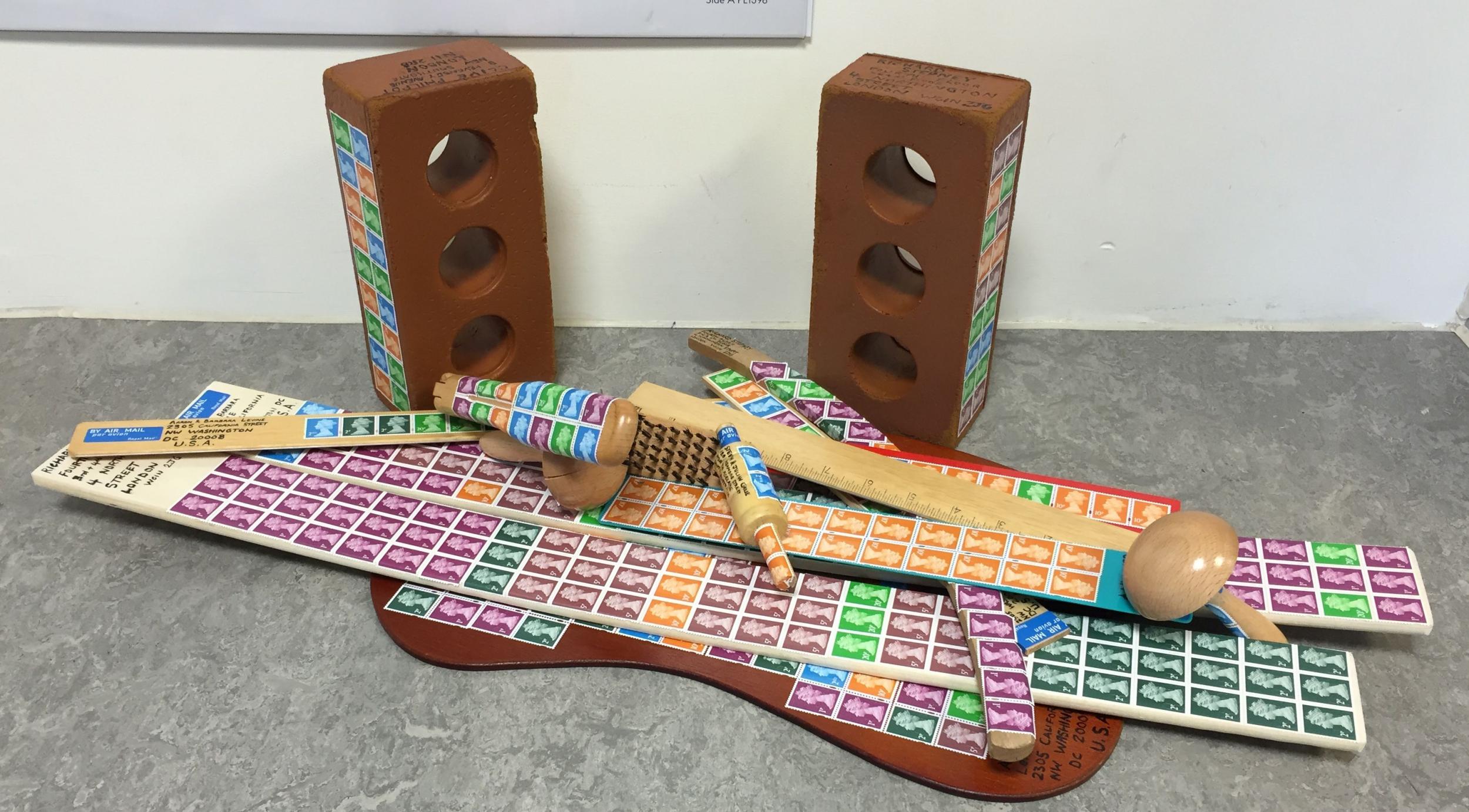
“There is always a sense of an unknown collaborator," he says. "It is that unknown relationship with these people and the systems involved - both the person receiving the item and the postmen - where you have no idea who they are and they have no idea who you are, but they are in contact with the work."
It’s strange to think about all the people who interact with the letters we send. There’s a certain level of trust you have to have with the postal service, one which I personally never thought of until I got sent a brush covered in stamps.
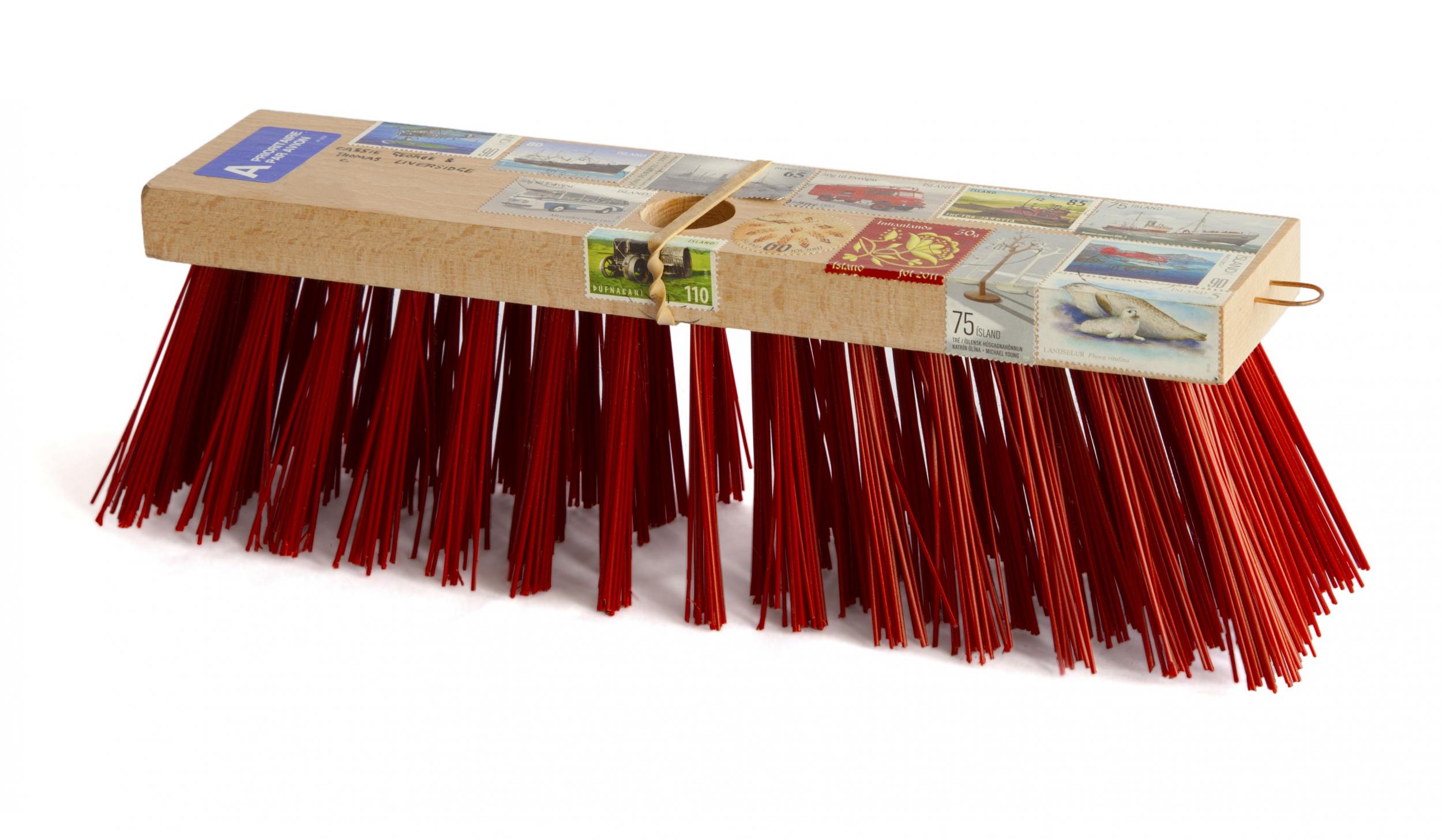
“Just because it has been delivered in the past doesn’t mean it will get there in the future," he continues. “There’s a leap of faith the moment it goes into a postbox; it disapears in one place then magicaly appears in another. It is during this process that the artwork has the potential to exist in many different places, seemingly at once.”
In 2011, his postal project transformed once again. When in New York, Liversidge began talking to a postwoman at the Sean Kelly gallery in New York.
“She gave me the idea to create a piece of work that would be installed by her rather than me.”
Instead of having a curator at the gallery, the only person who could install the work was the wonderfully-named postwoman, Dana Giro. Liversidge would send the gallery numerous items which Ms Giro would arrange at the back of the gallery on her ‘postal shelf’ however she saw fit.
“The responsibility for the work was entirely with her, she was the only person who could make that work.”
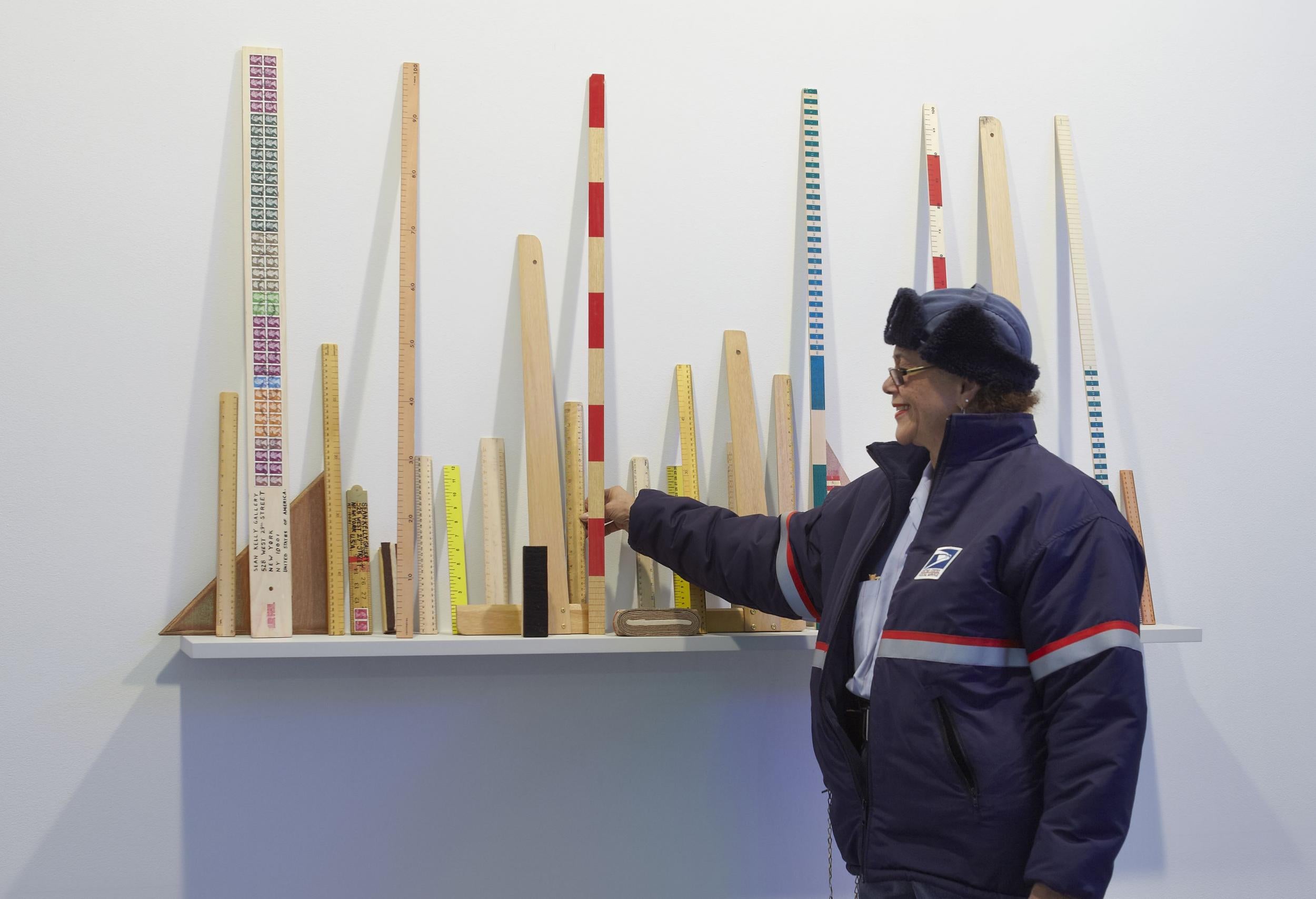
100 items were sent from the UK to New York, 84 of which made the entire journey. That wasn’t the only thing that didn’t go as planned, though. While those items were on display - throughout December 2011 and January 2012 - it was Ms Giro’s birthday. To celebrate, she and a bunch of friends visited the gallery for drinks.
“She put her arms around the things on the shelf and threw them on the floor," Livesidge says. "She then picked them up and put them back on the shelf in a new order.
“That was one of the unintended consequences of the work, that she took complete ownership of it. Normally we’re used to going to a space that is completely static in its form. These pieces can change, but they also have the potential to totally fail.”
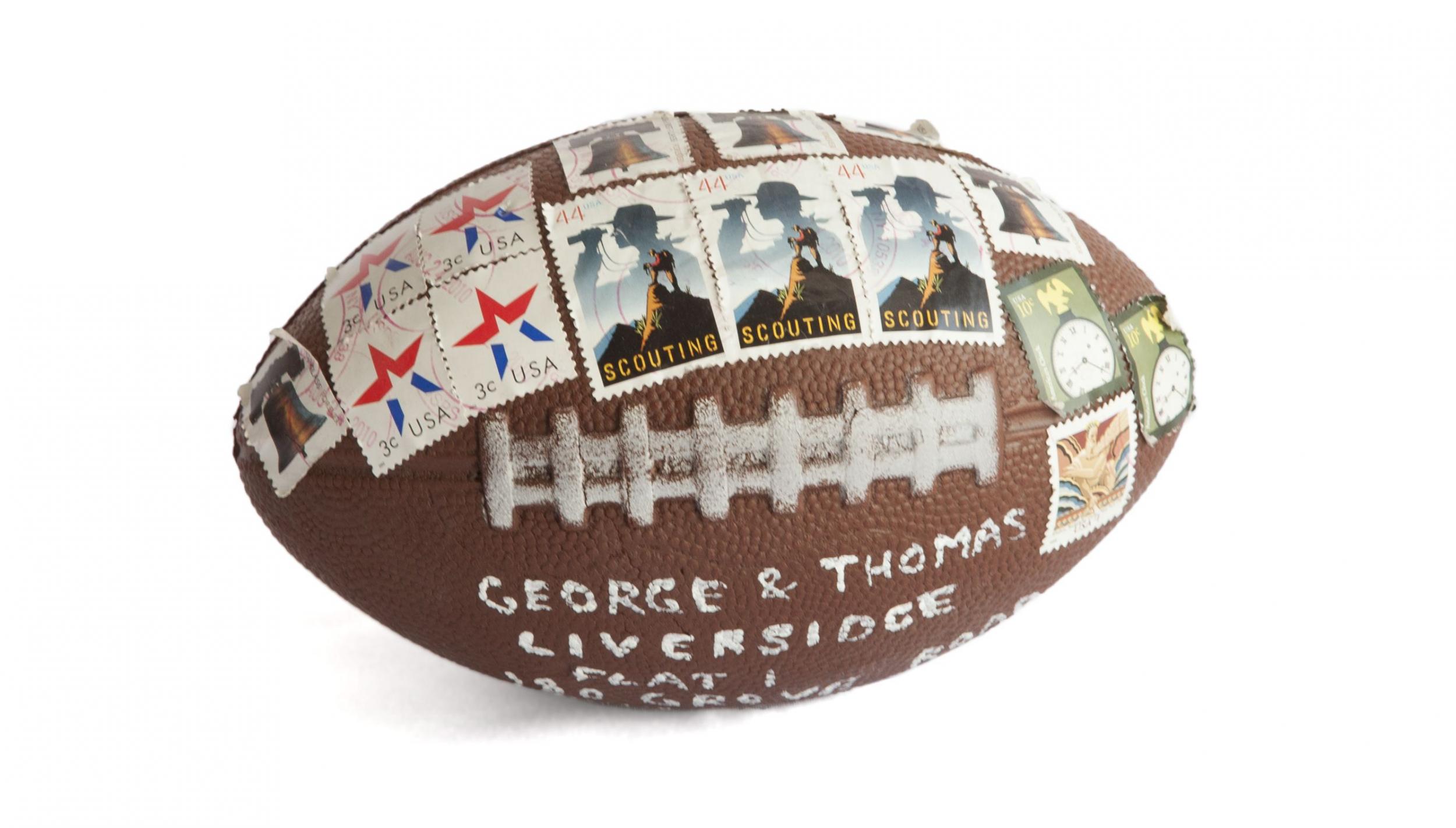
At a second show, after the gallery moved down the road, Liversidge had a new idea for a display: to send 400 rulers in batches of 50 to the new location and put them on a new ‘postal shelf’, all in time for its opening. Then, when visitors came round, they could take a ruler with them.
“We wanted people to walk away with them, so they get distributed through Manhattan or New York, wherever they wanted to take these things. The funny thing was they didn’t arrive until three weeks after the opening. We found out a few years later they got stuck in customs because they thought the parcel was broken as they saw stacks of rulers coming in every four or five days.”

While Liversidge’s work may be on show in galleries, it is still something he primarily does for his friends and family: “I send them just as much to my mum, people I meet along the way.
“I have two boys, and I send them things in pairs, and sometimes one will get something while the other won’t. There is a freedom for it to go wrong, for it to fail, that there is a lack of control that is part of that system.
"That is the part that interests me, the break down of the perceived responsibilities within the postal system, a human element. It invites the development of a longer narrative, whilst asking the question: where do these lost objects finally lodge?”

One of the many friends Liversidge has constantly sent items to is Peter Foolen, whom over the last 15+ years has collected enough items to host his own display of the items at the Van Abbemuseum in the Netherlands.
There are currently over 120 posted objects on show in the display, titled Surface Mail. “What’s brilliant about it is that it is one person’s collection going on display,” Liversidge says.
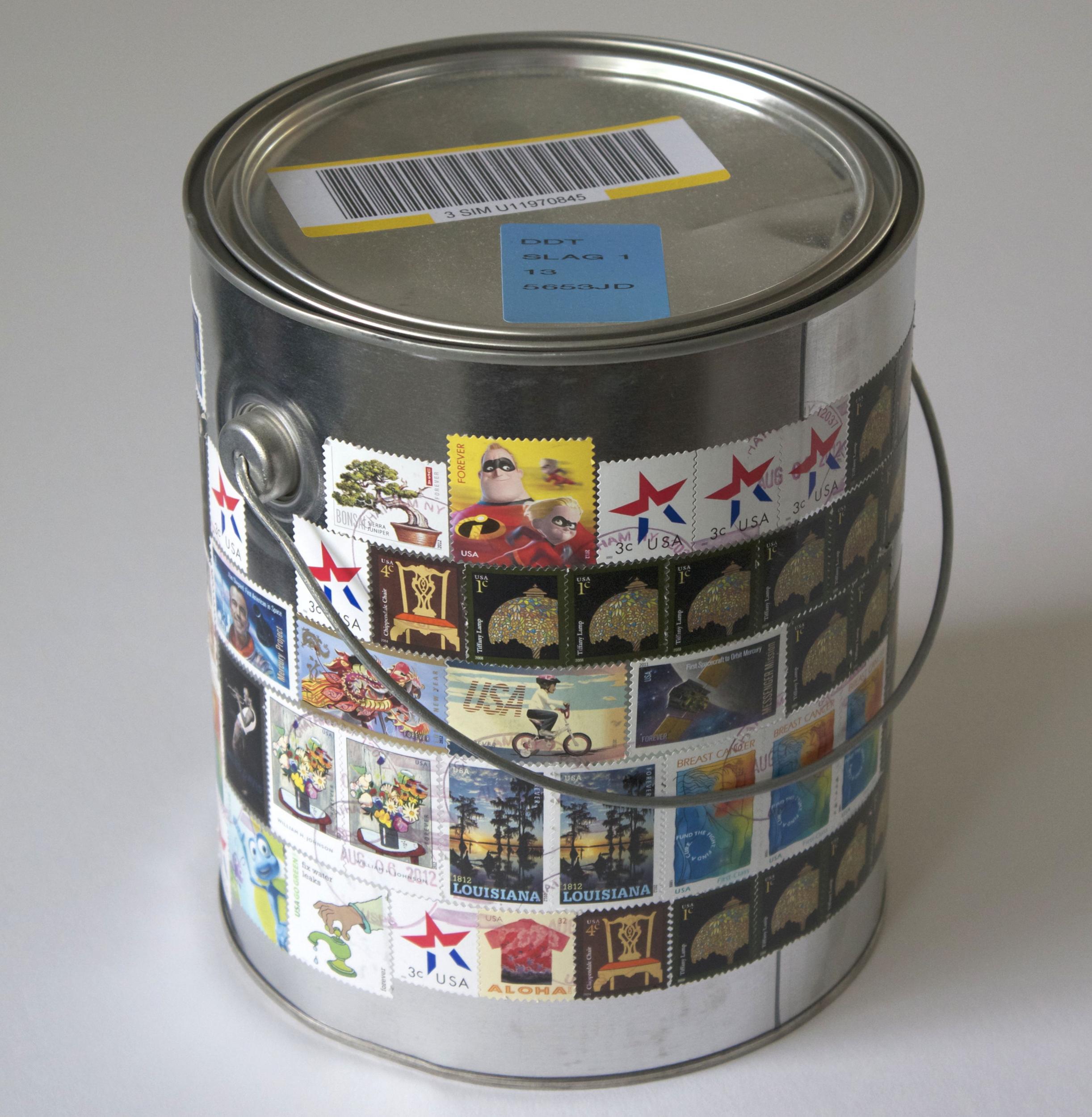
“There are only a couple of people who I have sent items to consistently for that long and each one has a different relationship with their postman, one that they never would have had otherwise.”
So what’s the strangest thing he’s ever sent in the post to anyone? “I’m not sure. I’ve sent so many things, broken up table and chairs which can be put together, should the other person get all the parts. Things like fruit and vegetables, I sent a potato to a friend in Kentucky.”
If customs were confused about the rulers, imagine how they were when they saw a lone potato being sent around the world.
Peter Foolen’s display of Liversidge’s work, titled Surface Mail, is being shown at the Van Abbemusuem of contemporary art in Eindhoven, Netherlands from now until the 22 January 2016. To view Peter Liversidge's other works and keep up with his latest projects, visit his website here.
Join our commenting forum
Join thought-provoking conversations, follow other Independent readers and see their replies
Comments